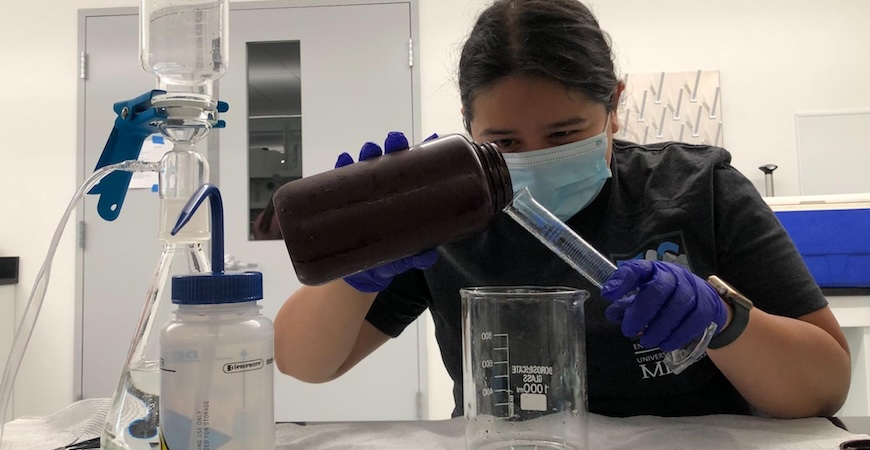
San Luis Reservoir in Merced County - one of California's largest artificial lakes - not only irrigates Central Valley farmland and supplies drinking water across Silicon Valley and the South Bay, but also draws swimmers, boaters and anglers year-round.
Yet for months at a time, forest-green blankets of algae spread across the lake's surface. Despite their calm appearance, these harmful algal blooms, or HABs, can disrupt water supplies, ecosystems and recreation activities - and pose serious health risks.
Over the past decade, the California Department of Water Resources has issued frequent health advisories for the reservoir. These warnings, which escalate from caution to danger, tell visitors when to avoid the water due to toxins that can cause rashes, eye irritation and flu-like symptoms.
While earning her graduate degree in environmental systems at UC Merced, Brittany Barreto Martinez, now a postdoctoral research fellow at the Disturbance Hydrology Lab at San Diego State University, saw an opportunity to improve HAB monitoring, which has typically relied on shoreline water samples.
"One day I went out to sample on Labor Day weekend, and naturally people took their boats to fish and swim," said Barreto Martinez. "At the time, the lake was very green - at a warning level, at least. It's valuable to determine the algal bloom patterns further into the lake rather than just at the lake's edges, especially if boating and fishing is allowed."
To get a better idea of how algae starts to accumulate away from shore, Barreto Martinez looked up - way up. Together with her doctoral advisor, Erin Hestir, a professor of civil and environmental engineering and director of CITRIS at UC Merced, she decided to explore the use of satellite remote sensing to detect HABs within San Luis Reservoir, across the lake's full surface.
Barreto Martinez partnered with environmental engineering Professor Marc Beutel to pursue the research. To see what they learned and how this research has a real impact on public safety, read the full story on the CITRIS website .



